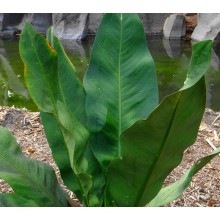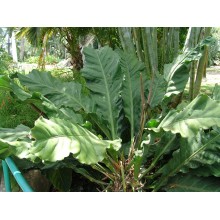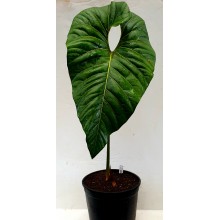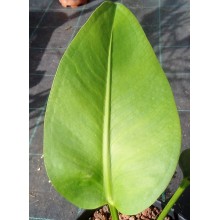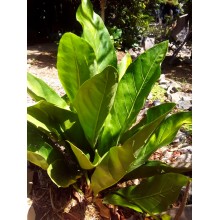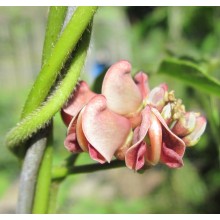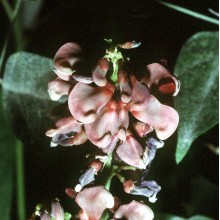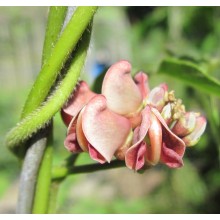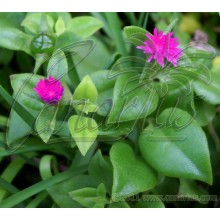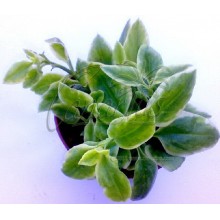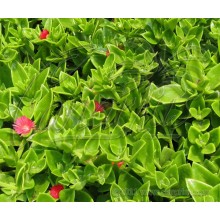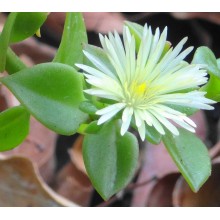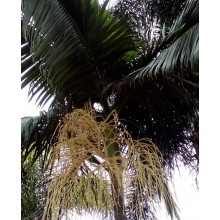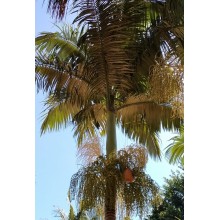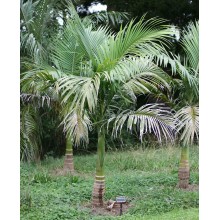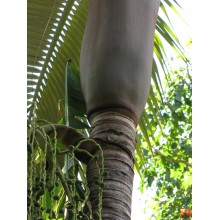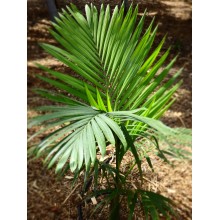General Plants There are 1882 products.

If you like exotic plants, you just came to the right place. Canarius offers the hard-to-find exotic plants which are seldom available in garden centres. Our shop has natural species as well as rare hybrids. We offer exotic plants from the Canary Islands.
Orders are sent to anywhere in Europe and also worldwide. Parcels will reach your home in a few days after shipping (but we also need some days for processing). Feel free to contact us if you have any questions.
Subcategories
-
Succulents
World deserts and dry areas are home to the most interesting plants. Canarius offers an increasing selection of succulent plants of maximum quality, because they are grown outdoors, under the full sun of the Canary Islands.
Succulents or "fat plants" are water-retaining species, adapted to dry conditions. They store succum (juice, water) in their leaves, stems or roots, and often show a stout and fleshy appearance.
-
Exotics
Exotic plants are species from other parts of the world, and they usually have ornamental qualities: a lush foliage, colorful flowers, unusual shapes... Here you can find a great variety of exotic plants: from Bromeliads and Heliconias, to pamls and houseplants.
Exotic plants do not have a particular use. Collectors buy this kind of plants for their rarity, for indoor or outdoor decoration, depending on their features.
-
Fruit, Herbs & Medicinals
Fruit, Herbs & Medicinal plants are focused on getting a better health. In this section, each type of plant produce healthy effects, both fruit trees (Feijoa, Pineapple, Fina de Jete...) and plants for health, such as Graviola, Aloe vera, Callisia fragrans...
In the normal metabolism of all living beings, the organism produces some substances from nutrients latent in the environment; some of these chemicals are part of the process in all (or almost) sort of species. Normally, the useful compounds are concentrated in some of its parts: leaves, seeds, flowers...
Find out your advisable plant and buy it online!
-
Special
On canarius.com we try to remove limits in the field of botany. On our online store we try to facilitate the purchase/sale of plants to anywhere in the world. That's why, we grow from the most common species to the most special plants, as we can see in this section.
-
Anthurium coriaceum
Anthurium coriaceum
We have tried LOTS of aroids outdoors and this is one of the toughest of all birdnest anthuriums. It thrives outdoors here in the subtropics and takes harsh condistions.
53,00 € -
Anthurium crassinervium
Anthurium crassinervium
This "birdnest Anthurium" with glossy, wide and ruffled leaves can slowly grow to enormous proportions. As a house plant it is usually smaller.
46,00 € -
Anthurium decipiens
Anthurium decipiens
This giant-leaved aroid is considered a holy grial by those who love exotic foliage. It was called Anthurium salgarense until 2019, when it was split out of the species salgarense as it was described as a new species on its own.
285,00 € -
Anthurium maricense
Anthurium maricense
Small, elegant birdnest Anthurium with rounded thick leaves,15-30 cm long. It is endemic to a small coastal area close to Río de Janeiro, exposed to wind and drought. It is surprisingly hardy to cold and stood light frost in Mediterranean conditions.
46,20 € -
Anthurium schlechtendalii
Anthurium schlechtendalii
Extremely ornamental birdnest anthurium with nice dark purple inflorescences, followed by thick "tails" of glossy red fruits. It does well in pots or as an epiphytes, attaining 50-120 cm in height. It is mid-sized and goes well as an indoor plant.
58,90 € -
Anthurium wendlingeri
Anthurium wendlingeri
Truly exotic aroid with narrow and long, penduluous , dark leaves and an unusal corkscrew inflorescence.
68,00 € -
Apios americana 'Early Blooming'
Apios americana 'Early Blooming'
This is a early blooming cultivar of Groundnut or Hopniss. This "ancient crop", scientifically named Apios americana, belongs to the family of beans and actually grows much like a bean, but in its case the edible part is the tuberous root system hidden underground, which is delicious and high in protein.
18,30 € -
Apios americana 'Late Blooming'
Apios americana 'Late Blooming'
This is a late blooming cultivar of Groundnut or Hopniss. This "ancient crop", scientifically named Apios americana, belongs to the family of beans and actually grows much like a bean, but in its case the edible part is the tuberous root system hidden underground, which is delicious and high in protein.
18,30 € -
Apios americana 'Nutty'
Apios americana 'Nutty'
This is a nutty-tasting blooming cultivar of Groundnut or Hopniss. This "ancient crop", scientifically named Apios americana, belongs to the family of beans and actually grows much like a bean, but in its case the edible part is the tuberous root system hidden underground, which is delicious and high in protein.
18,30 € -
Aptenia cordifolia
Aptenia cordifolia
Four 14-20 cm cuttings - Creeping, fast growing groundcover mesemb with flowers in summer. This is the true A. cordifolia, with hearth-shaped leaves with bumpy surface and purple-pink flowers. It takes more cold than other aptenias.
11,00 € -
Aptenia cordifolia Variegata
Aptenia cordifolia Variegata
NEW ! - Branched plant. Delicate creeping succulent with cream and green foliage. Leaves are glossy, hearth-shaped and slightly succulent.
12,50 € -
Aptenia cordifolia x A. haeckeliana
Aptenia cordifolia x A. haeckeliana
Four 15-20 cm cuttings. Creeping, fast growing succulent plant with bright pink-red flowers in summer. This hybrid Aptenia is the perfect groundcover for gardens in coastal mediterranean climates. This is called Aptenia 'Red Apple' in the USA.
11,20 € -
Aptenia haeckeliana
Aptenia haeckeliana
Aptenias are excellent groundcover plants. They are creeping succulents, potentially evergrowing in the "mesemb" family: Aizoaceae. There are 4 species in the genus Aptenia and this A. haeckeliana is the beautiful one with the yellow flowers.
12,40 € -
Archontophoenix maxima
Archontophoenix maxima
Very elegant palm from Australia, with slender ringet trunk, topped by a showy bright green crownshaft.
32,50 € -
Archontophoenix myolaensis
Archontophoenix myolaensis
This species of Archontophoenix is native to a small area in the mountainous region west of Cairns in N.W. Queensland, found in a few locations in gallery forests following rivers. It is similar to the more common Archontophoenix cunninghamiana, with a slightly smaller size, a bluer crownshaft and some other minor differences.
42,00 € -
Archontophoenix purpurea
Archontophoenix purpurea
The showy, colourful crownshaft is the masterpiece of this elegant solitary palm from australia. A rainbow of purple, green and blue.
52,00 € -
Archontophoenix tuckeri
Archontophoenix tuckeri
Uncommon Archontophoenix species from Northern Australia. Leaves are silver underneath, somewhat pendulous or drooping. It is suited to coastal Mediterranean condition and it takes cool weather and short, light frosts.
28,60 € -
Areca catechu
Areca catechu
Areca catechu is a species of palm native to the Philippines cultivated for areca nuts. Medium-sized palm tree, growing straight to 20 m tall, with a trunk 10–15 cm in diameter. The leaves are 1.5–2 m long, pinnate, with numerous, crowded leaflets.
29,40 €
At the moment there are few products in this category General Plants




















